Sigma A 50-100 mm f/1.8 DC HSM
5. Chromatic and spherical aberration
Chromatic aberration
The longitudinal chromatic aberration is certainly nothing easy to correct for a lens with such parameters. The Sigma dealt with it very well at longer end of the focal range but in the 50-75 mm range there were some problems and the photo below is the proof. Still it would be difficult to speak about a slip-up here – it is still a level which you should consider to be medium.
 |
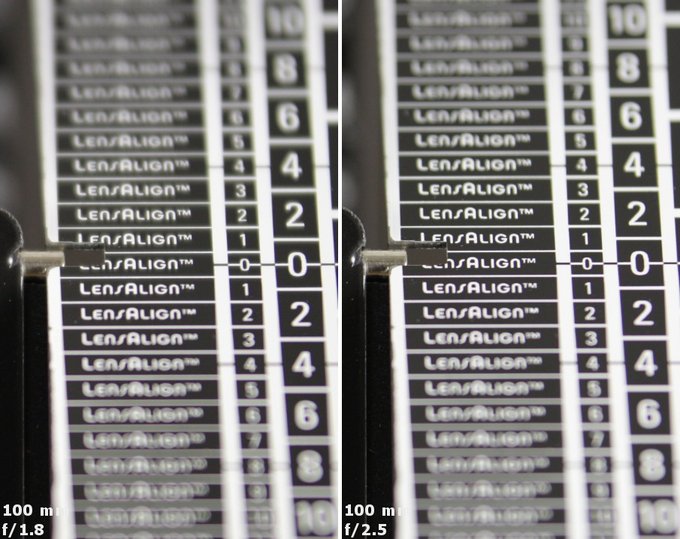 |
Please Support UsIf you enjoy our reviews and articles, and you want us to continue our work please, support our website by donating through PayPal. The funds are going to be used for paying our editorial team, renting servers, and equipping our testing studio; only that way we will be able to continue providing you interesting content for free. |
- - - - - - - - - - - - - - - - - - - - - - - - - - - - - - - - - - - - - - - - - - - - - - - -
Now let’s check how the lateral chromatic aberration fares – the graph below shows its performance at 50, 75 and 100 mm.
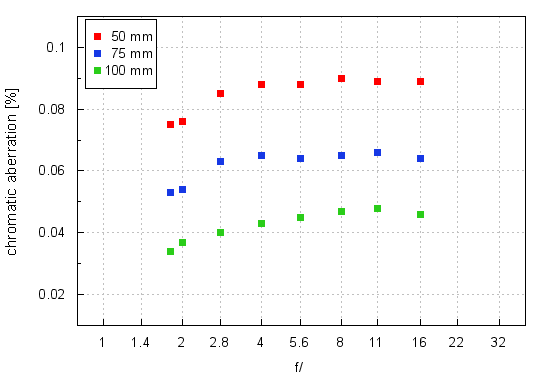
In the 75-100 mm range there are not even the slightest reason to complain because that aberration level is simply low. The biggest chances to notice it you get at 50 mm focal length but even there it reaches 0.08–0.09%, so a borderline between low and medium level. Packing the lens with as many as seven low dispersion elements definitely paid off.
| Canon 50D, 50 mm, f/8.0 | Canon 50D, 100 mm, f/1.8 |

|

|
Spherical aberration
In the case of photos of our autofocus testing chart presented at the beginning of this chapter, especially those at 100 mm focal length, we noticed a slight depth of field shift toward longer distances after changing the aperture from f/1.8 to f/2.5. It means the lens doesn’t correct the spherical aberration as it should.
The appearance of circles of light we got in front of and behind the focus proves that much. The images we got at 75 and 100 mm focal lengths were the same. A circle in front of the focus had a soft edge and that behind the focus ended with a lighter rim.
| Canon 50D, 75 mm, f/1.8, przed | Canon 50D, 75 mm, f/1.8, za |
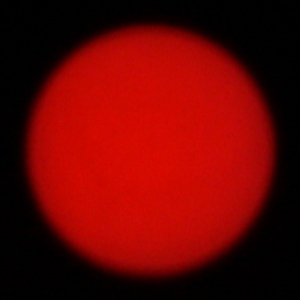
|
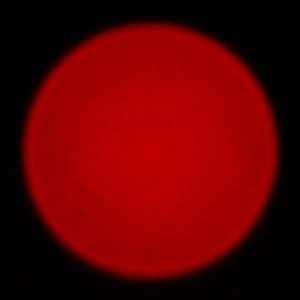
|
| Canon 50D, 100 mm, f/1.8, in front of | Canon 50D, 100 mm, f/1.8, behind |
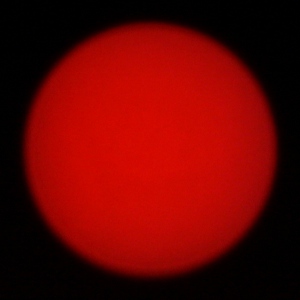
|
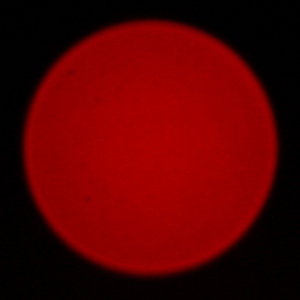
|
To sum up the optical construction of the Sigma 50-100 mm doesn’t correct the spherical aberration in a perfect way and its influence remains noticeable. Still it must be emphasized that such an effect is slight and the focus shift it causes might be distinct only at longer focal lengths and while taking photos from closer distances. What’s more, even then the depth of field encompasses the proper object so, from a practical point of view, the spherical aberration shouldn’t be bothersome. Most probably a slight lowering of resolution at the maximum relative aperture and at 100 mm when compared to the shorter end of the focal spectrum is its only effect; we’ve mentioned that phenomenon in the previous chapter.






